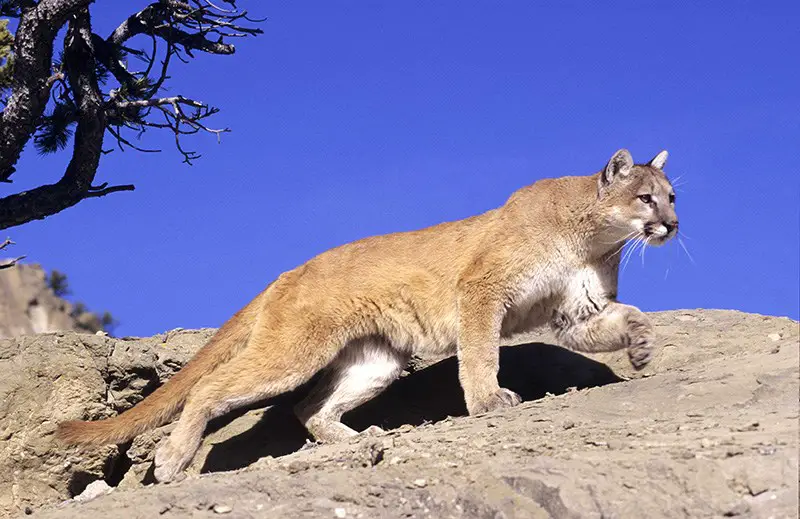Mountain lions, also known as cougars or pumas, are among the most elusive and fascinating predators in North America. For residents and outdoor enthusiasts in Texas, the question often arises: are there mountain lions in Texas? Understanding their presence, behavior, and habitats in the Lone Star State is crucial for safety, conservation, and wildlife appreciation.
In this article, we will explore everything you need to know about mountain lions in Texas, from their distribution to observation tips and ecological significance.
Mountain Lion Overview

Mountain lions are large carnivorous felines native to the Americas. Their scientific name is Puma concolor, and they are known for their adaptability to various environments. These predators can thrive in forests, deserts, mountainous regions, and even near urban areas when their natural habitat is encroached upon. Adult mountain lions typically weigh between 115 to 220 pounds, with males being larger than females. Their tan or light brown coats, muscular build, and long tail make them distinct among North American wildlife.
In Texas, mountain lions are a species of particular interest because sightings are relatively rare, yet their populations, though small, still exist. Their presence in the state is influenced by factors such as habitat availability, prey abundance, and human activity. Mountain lions are solitary animals with large territorial ranges, often traveling up to 20 miles in a single day while hunting.
Mountain Lion Distribution in Texas
Mountain lions in Texas are primarily found in the western and southwestern regions of the state, including parts of the Trans-Pecos area, Davis Mountains, and Big Bend region. These areas provide rugged terrain, cover, and prey necessary for their survival. Unlike in states such as Colorado or Montana, mountain lion populations in Texas are fragmented, with only a limited number of individuals residing in suitable habitats.
Sightings outside these regions are uncommon but not impossible. Lone individuals, often young males dispersing in search of new territories, occasionally travel into central and eastern Texas. While these encounters are rare, they highlight the species’ adaptability and the potential for mountain lions to occupy various ecosystems within the state.
Historical Context
Historically, mountain lions were widespread throughout Texas, inhabiting forests, plains, and mountainous areas. However, due to extensive hunting, habitat loss, and human settlement, their numbers drastically declined by the early 20th century. By the 1950s, mountain lions were largely restricted to the more remote western regions of Texas. Conservation efforts and wildlife protection measures have since allowed populations to stabilize in certain areas, though they remain low compared to other states with larger mountain lion populations.
Behavior and Hunting Patterns
Mountain lions are apex predators, primarily preying on deer, wild hogs, rabbits, and smaller mammals. Their hunting strategy relies on stealth, patience, and power. These cats are known to stalk their prey silently before launching a swift attack, often targeting the neck or back to immobilize their victim quickly. They are primarily nocturnal, becoming most active at dawn and dusk, which contributes to their elusive nature and infrequent human encounters.
In Texas, mountain lions play a critical role in maintaining the balance of ecosystems. By preying on herbivores such as deer and wild hogs, they help control populations that could otherwise cause overgrazing or damage to local vegetation. Their presence also indirectly supports smaller predators and scavengers by leaving behind carrion from their kills.
Territoriality and Movement
Mountain lions are solitary and territorial animals. Males often claim territories that overlap with multiple female ranges, ensuring access to potential mates. Female mountain lions typically have smaller home ranges, which they actively defend, especially when raising cubs. Young mountain lions leave their mother’s territory around 12 to 18 months of age to find their own, sometimes traveling vast distances in search of unclaimed habitat. This dispersal behavior occasionally leads to sightings in areas where mountain lions are otherwise rare, including parts of eastern and central Texas.
Mountain Lion Reproduction and Lifespan
Mountain lions reproduce throughout the year, with a peak breeding season typically occurring in winter and spring. Females give birth to litters of one to six cubs after a gestation period of approximately 90 days. The cubs are born blind and helpless, relying entirely on their mother for protection and nourishment. During the first few months, the mother hides her cubs in dense vegetation or rocky outcrops to shield them from predators and human interference.
Cubs grow rapidly, beginning to accompany their mother on hunting trips at around three months old. By six months, they are learning essential survival skills, and by one year, they are increasingly independent. In the wild, mountain lions can live up to 10–12 years, although mortality rates are high among young dispersing individuals due to competition, accidents, or encounters with humans and domestic animals.
Signs and Evidence of Mountain Lions in Texas
Mountain lions are elusive, and direct sightings are rare. However, several signs indicate their presence in the wild. Tracks, known as paw prints, are large and rounded with four toes and a distinct heel pad. Scat, or feces, is often found along trails and contains hair, bones, or other remnants of prey. Scratches on trees and rocks, territorial markings, and prey remains are also indicators of mountain lion activity.
In Texas, wildlife experts and park rangers often rely on trail cameras and monitoring stations to track mountain lion populations. These tools have confirmed the presence of mountain lions in the Trans-Pecos and Big Bend regions, providing valuable data on their movements, numbers, and behavior.
Mountain Lion Sightings
Although rare, mountain lion sightings in Texas occasionally make headlines. Most reports involve young males dispersing into areas where they are less expected. Sightings tend to occur near dawn or dusk, along remote trails, or in less-developed parts of the state. Experts advise that many reported sightings may also be misidentifications, with bobcats, large domestic cats, or even feral cats mistaken for mountain lions. Verification by wildlife authorities is essential before confirming a true mountain lion presence.
Safety Around Mountain Lions
Encounters with mountain lions in Texas are uncommon, but it is important for residents and outdoor enthusiasts to understand safety precautions. If you encounter a mountain lion, avoid running, as this can trigger the predator’s chase instinct. Maintain eye contact, appear large by raising your arms, and back away slowly. Make loud noises to intimidate the animal, and if attacked, fight back using available objects.
Parents and hikers are advised to supervise children and pets, especially in areas known for mountain lion activity. Trails and parks in western Texas often display informational signs about local wildlife, including mountain lions, to educate visitors on safety and awareness.
Observing Mountain Lions Responsibly
Observing mountain lions in their natural habitat is a rare but rewarding experience. Wildlife enthusiasts should approach observation with respect and caution. Maintaining distance, using binoculars or cameras with telephoto lenses, and avoiding disruption of the animal’s natural behavior are essential practices. Mountain lions are more likely to be observed at dawn or dusk when they are actively hunting or moving between territories.
Conservation organizations in Texas often conduct guided wildlife tours and educational programs focusing on mountain lions and other native species. Participating in such programs allows for safe observation while supporting research and conservation efforts.
Conservation Status in Texas
Mountain lions in Texas are not considered endangered but are protected under state law in many areas. Hunting regulations, habitat protection, and wildlife monitoring help ensure their populations remain stable. Challenges such as habitat fragmentation, urban encroachment, and conflicts with humans continue to threaten these predators. Conservationists advocate for creating wildlife corridors, reducing human-wildlife conflicts, and promoting awareness about mountain lion ecology.
Maintaining a healthy mountain lion population in Texas is important not only for the species itself but also for the overall ecosystem. These apex predators play a critical role in regulating prey populations and maintaining the balance of natural habitats.
Ecological Importance
The ecological impact of mountain lions extends beyond predation. By controlling herbivore populations, they help prevent overgrazing and maintain plant diversity. Their presence supports smaller carnivores and scavengers by providing food sources through leftover prey. Mountain lions also contribute to the genetic health of prey species by culling weak or sick individuals, indirectly strengthening the population.
In Texas, where wild hogs and deer can have significant impacts on agriculture and natural landscapes, mountain lions serve as natural regulators. Their presence, even in limited numbers, benefits both the environment and the state’s biodiversity.
Misconceptions About Mountain Lions in Texas
Many myths surround mountain lions in Texas. Some people believe the state has large populations or that these predators frequently attack humans. In reality, mountain lions are rare, elusive, and generally avoid human contact. Verified attacks are extremely uncommon, and most encounters involve sighting the animal at a distance. Education and accurate reporting are key to dispelling misconceptions and promoting coexistence between humans and wildlife.
Mountain Lions vs. Bobcats
A common source of confusion involves bobcats, smaller felines that are widespread across Texas. While bobcats are more frequently seen and active during daylight, mountain lions are larger, solitary, and primarily nocturnal. Distinguishing between the two is important for accurate wildlife observation and reporting.
Final Thoughts
So, are there mountain lions in Texas? Yes, they exist, primarily in the western and southwestern regions of the state. Their elusive nature, solitary habits, and vast territories make encounters rare, but their ecological role is vital. Understanding mountain lions—where they live, how they behave, and how to safely coexist with them—enhances wildlife appreciation and supports conservation efforts. Observing these magnificent predators in their natural habitat is a rare privilege and a reminder of the rich biodiversity that Texas has to offer.
By learning about mountain lions in Texas, residents and visitors can appreciate the balance of ecosystems, respect the boundaries of wild predators, and contribute to conservation initiatives that protect both humans and wildlife. Whether you are a hiker, photographer, or wildlife enthusiast, knowledge about these powerful cats ensures safe and informed interaction with one of Texas’s most fascinating native species.
FAQs About Mountain Lions in Texas
How many mountain lions are in Texas?
Exact numbers are difficult to determine due to their elusive nature. Populations are small and primarily concentrated in western and southwestern Texas, including the Trans-Pecos and Big Bend regions. Occasional dispersing males may appear in other parts of the state.
Are mountain lions dangerous to humans in Texas?
Encounters are extremely rare. Mountain lions generally avoid humans. Attacks are uncommon, and most involve defensive reactions rather than predatory behavior.
What areas in Texas have the highest likelihood of mountain lion sightings?
Western Texas, particularly the Trans-Pecos region, Davis Mountains, and Big Bend area, offers the most suitable habitat. Remote and rugged terrain increases the chances of spotting mountain lions.
What should I do if I encounter a mountain lion in Texas?
Stay calm, do not run, and maintain eye contact. Make yourself appear large, back away slowly, and use loud noises to deter the animal. If attacked, fight back using available objects.
How can I identify a mountain lion in Texas?
Mountain lions are large cats, tan to light brown in color, with muscular builds and long tails. Paw prints are large and rounded, and their scat may contain hair or bones from prey. They are significantly larger than bobcats, which are often mistaken for mountain lions.
Are mountain lions protected in Texas?
Yes, in many areas they are protected under state law. Hunting regulations and wildlife conservation programs help maintain population stability, although habitat fragmentation remains a challenge.
When are mountain lions most active in Texas?
Mountain lions are primarily nocturnal, with peak activity at dawn and dusk. These times are ideal for observing them safely from a distance using binoculars or trail cameras.
Do mountain lions have an ecological impact in Texas?
Yes, they play a key role as apex predators, controlling deer and wild hog populations, which helps maintain plant diversity and ecosystem balance. Their presence also benefits scavengers and smaller predators.






